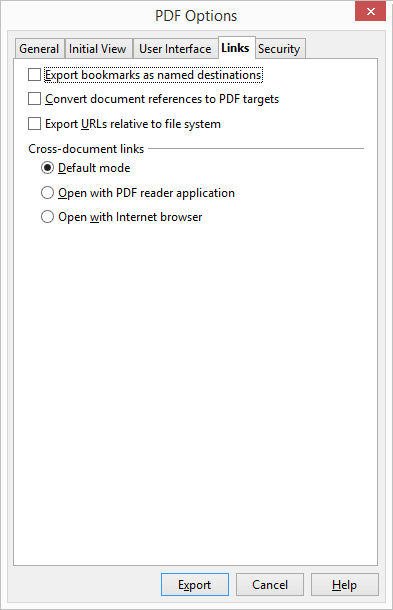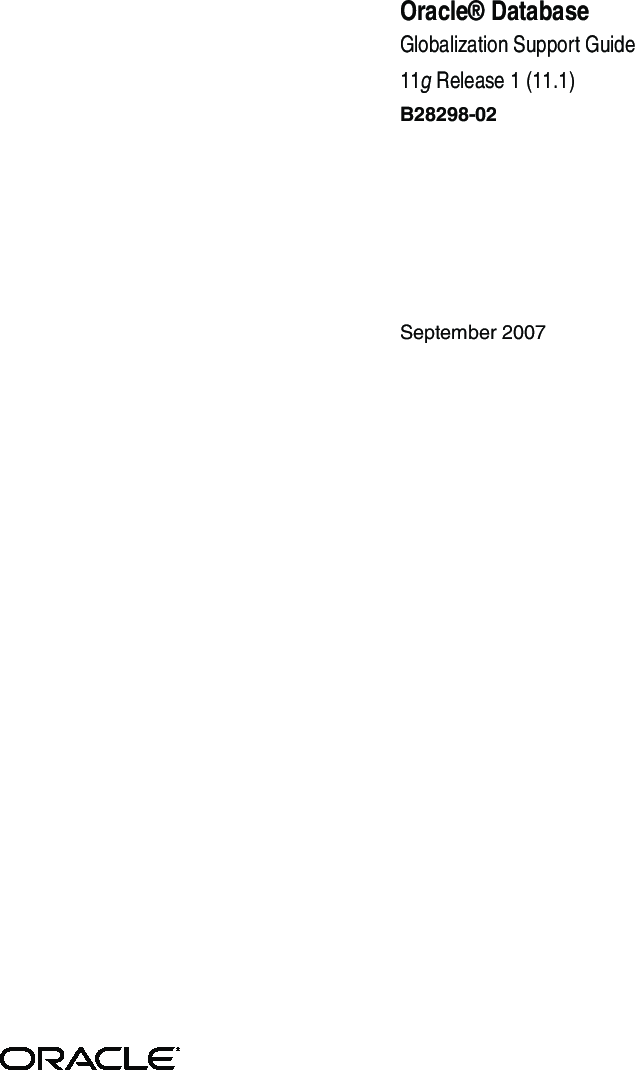Manage a flexible, highly available Oracle database with help from the expert information contained in this exclusive Oracle Press guide. Fully revised to cover every new feature and utility, Oracle Database 11g DBA Handbook shows how to perform a new installation, upgrade from previous versions, configure hardware and software for maximum. See the Description for required source code and links Complete Oracle DBA Tutorial of Oracle Database Training for Database Programmer & Administrator.Chapt.
- Oracle White Paper— Oracle Data Mining 11g: Competing on In-Database Analytics 1 Executive Overview Oracle Data Mining provides powerful data mining functionality within the Oracle Database. It enables you to discover new insights hidden in your data and to leverage your investment in Oracle Database technology.
- Oracle 10g/11g Data and Database Management Utilities. Author: Hector R. File size: 4.93 MB. File format: PDF. Category: Database, Oracle. Book Description: This book is written using a practical approach that guides you through different practical scenarios.
- Manage a flexible, highly available Oracle database with help from the expert information contained in this exclusive Oracle Press guide. Fully revised to cover every new feature and utility, Oracle Database 11g DBA Handbook shows how to perform a new installation, upgrade from previous versions, configure hardware and software for maximum.
Oracle Database Administration Contents
Introduction to Oracle DatabaseOverview of Oracle Grid Architecture
Difference between a cluster and a grid
Responsibilities of Database Administrators
Creating Oracle Database
Creating Oracle 11g / 10g Database using SQL commands
Creating Oracle Container Database in 12c using DBCA
Creating Oracle Container Database in 12c using SQL commands
Managing Oracle 12c Container Databases

Managing Pluggable Databases in Oracle 12c
Creating Pluggable Database from Seed
Cloning an Existing Pluggable Database
Unplugging and Plugging databases from one CDB to another CDB
Creating New Tablespaces
Bigfile Tablespaces (Introduced in Oracle Ver. 10g)
To Extend the Size of a tablespace
To decrease the size of a tablespace
Coalescing Tablespaces
Taking tablespaces Offline or Online
Making a Tablespace Read only.
Renaming Tablespaces
Dropping Tablespaces
Viewing Information about Tablespaces and Datafiles
Relocating or Renaming Datafiles
Renaming or Relocating Datafiles belonging to a Single Tablespace
Procedure for Renaming and Relocating Datafiles in Multiple Tablespaces
Increasing or Decreasing the size of a Temporary Tablespace
Tablespace Groups
Creating a Temporary Tablespace Group
Assigning a Tablespace Group as the Default Temporary Tablespace


Scenario 1: Fixing Bitmap When Allocated Blocks are Marked Free (No Overlap)
Scenario 2: Dropping a Corrupted Segment
Scenario 3: Fixing Bitmap Where Overlap is Reported
Scenario 4: Correcting Media Corruption of Bitmap Blocks
Scenario 5: Migrating from a Dictionary-Managed to a Locally Managed Tablespace

Procedure for transporting tablespaces
Transporting Tablespace Example
Adding a New Redo Logfile Group
Adding Members to an existing group
Dropping Members from a group
Dropping Logfile Group
Resizing Logfiles
Renaming or Relocating Logfiles
Clearing REDO LOGFILES
Viewing Information About Logfiles
Multiplexing Control File
Changing the Name of a Database
Creating A New Control File
Switching to Automatic Management of Undo Space
Calculating the Space Requirements For Undo Retention
Altering UNDO Tablespace
Dropping an Undo Tablespace
Switching Undo Tablespaces
Viewing Information about Undo Tablespace

Example: Convert Data from MS-ACCESS to Oracle
Example: Migrate Data from Fixed Length file into Oracle
Example: Convert from MySQL to Oracle
Example: Migrating data from MS SQL Server to Oracle
Loading Data into Multiple Tables using WHEN condition
Conventional Path Load and Direct Path Load
Direct Path
Restrictions on Using Direct Path Loads
Invoking Export and Import
Command Line Parameters of Export tool
Example of Exporting Full Database
Example of Exporting Schemas
Exporting Individual Tables
Exporting Consistent Image of the tables
Example Importing Individual Tables
Example, Importing Tables of One User account into another User account
Example Importing Tables Using Pattern Matching
Using Data Pump Export Utility
Example of Exporting a Full Database
Example of Exporting a Schema
Exporting Individual Tables using Data Pump Export
Excluding and Including Objects during Export
Using Query to Filter Rows during Export
Suspending and Resuming Export Jobs (Attaching and Re-Attaching to the Jobs)
Importing Full Dump File
Importing Objects of One Schema to another Schema
Loading Objects of one Tablespace to another Tablespace
Generating SQL File containing DDL commands using Data Pump Import
Importing objects of only a Particular Schema
Importing Only Particular Tables
Running Import Utility in Interactive Mode
Flashback Query
Using Flashback Version Query
Using Flashback Table to return Table to Past States
Purging Objects from Recycle Bin
Flashback Drop of Multiple Objects With the Same Original Name
Flashback Database: Alternative to Point-In-Time Recovery
Enabling Flash Back Database
To how much size we should set the flash recovery area
How far you can flashback database
Example: Flashing Back Database to a point in time
Introduction
Creating Flashback Data Archive tablespace
Creating Flashback Data Archive
Querying historical data
LogMiner Configuration
LogMiner Dictionary Options
Using the Online Catalog
Extracting a LogMiner Dictionary to the Redo Log Files
Extracting the LogMiner Dictionary to a Flat File
Redo Log File Options
Example: Finding All Modifications in the Current Redo Log File
Example : Mining Redo Log Files in a Given Time Range
Opening the Database in Archivelog Mode
Bringing the Database again in NoArchiveLog mode
Taking Offline (COLD) Backups
Taking Online (HOT) Backups
Recovering from the Loss of a Datafile
When the Database is running in Noarchivelog Mode
When the Database is running in Archivelog Mode
Recovering from loss of Control File
Recovery Manager ( RMAN )
Taking Offline Backups using RMAN
Recovering the Database running in NOARCHIVELOG mode using RMAN
Taking Online Backups using RMAN
Taking backups of particular tablespaces or datafiles using RMAN
How to take Image Backups in RMAN
Taking Incremental Backup using RMAN
Incrementally updating backup copy for fast recovery
View information about RMAN backups
Configuring Retention policy in Oracle RMAN
Configure various Options in RMAN
Maintaining RMAN Repository
Recovering from the loss of datafiles using RMAN (Archivelog mode)
Recovering from the loss of datafile by changing it's location
Oracle Database 11g Bangla Pdf Books
Oracle Database 11g Bangla Pdf Booklet
More coming soon.....